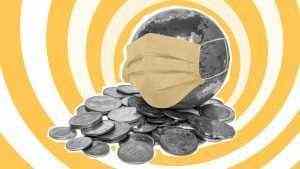

This includes money needed for key housing expenses such as your mortgage or rent payment, or the weekly food allowance necessary for your or your family’s sustenance. Money management is perhaps the least realized and most important weapon in a trader’s arsenal. A large percentage of Forex traders fail because they don’t have the concept of money management firmly in their grasp.
Creating a money management system for forex trading can seem daunting at first. But by following the six tips below, you’ll be able to build a solid foundation for a sustainable trading career. Money management can be equated to creating a budget for your household and planning how to save money for the year ahead, focusing on preserving and growing your funds.
One easy way to measure volatility is through the use of Bollinger Bands®, which employ standard deviation to measure variance in price. Figures 3 and 4 show a high volatility and a low volatility stop with Bollinger Bands®. In Figure 3 the volatility stop also allows the trader to use a scale-in approach to achieve a better «blended» price and a faster break even point. If you’re wondering where to go from here, you could save these six tips on your phone or computer under “forex mgmt” and refer back to them as needed. Then, when you’re ready to start implementing them for real, you can open an FXOpen account to start trading and refining your forex money management skills.

Risk management in this context could involve setting aside some money for a rainy day or purchasing home insurance, reducing your exposure to risk. AvaTrade is a pioneer in online trading and customer service, offering you a wide selection on all aspects of forex trading education. To learn more about trading and understanding the essentials, get in touch with our service team today. If, for example, the daily exposure level is 10% of the balance, then in the first example the trader would need to stop trading on the same day when he lost $100. As a result, putting funds at risk which you cannot afford to lose should never even be considered by a responsible forex trader.
Use Percentage-Based Position Sizing
For those traders who like to practice the «have a bunch, bet a bunch» style, this approach may be quite interesting. This uncertainty about the rate that would prevail on a future date is known as exchange risk. Consider you have $10,000 account; trade risk is 1% ($100 per trade).
If your balance drops to zero, stop trading, and wait until you have enough disposable funds to try again. In the meantime, you can work out why your trades resulted in losses and implement stricter money management rules for the future. Some people advocate using the same percentage of the initial balance, e.g., risking £200 on each trade, even if your balance falls to £5,000. While still requiring 50 successive losses to reduce your balance to £0, this strategy doesn’t consider your actual balance.
Employ the Anti-Martingale Method
Such money has been specifically designated for trading because it is expendable and therefore not needed for the basic essentials of living. Money management is a critical tactic that all traders must employ in order to preserve their capital. By managing their risk and trading size appropriately, traders can ensure that they are able to stay in the market for the long haul and capitalise on profitable trading opportunities.
“I was amazed at the impact such things as the size of the account, allocation of funds and the amount of money committed to each trade could have on the final results”. All previous losses can be potentially recovered with only one winning trade. Especially for trend following methods, the averaging up approach could be beneficial because it allows a trader to add more and more size once the trend reinforces itself. The pros of the fixed percentage approach are that you give the same weight to all your trades. Thus, the account graph usually looks much smoother and has less volatility. Every day brings a whole host of headlines about the financial markets.
Open your account and enjoy all the benefits and trading advice from market professionals, test our services on your risk-free demo account. If you’re looking for additional reading to supplement your forex trading education, you’ve come to the right place! Below we list just a handful of must-read forex trading books that we think are… But if traders average down enough and do it aggressively, they will wipe out. Traders must know how much is appropriate to risk based on their account size and the volatility of the instruments being traded. They cannot just trade the same dollar amount or random dollar amounts and expect a smooth, rising equity curve.
The fixed ratio approach is based on the profit factor of a trader. Therefore, a trader has to determine the amount of profit that allows him to increase his position (also known as ‘Delta’). On the other hand, when a trader has a winning streak, he doubles-up and risk twice as much on the next trade. The idea behind this approach is that after a winning trade, you are trading with ‘free’ money. Potential losing trades will be relatively smaller because the initial position is not as big when following the averaging up approach. Once you are ready to trade with a serious approach to money management and the proper amount of capital is allocated to your account, there are four types of stops you may consider.
Inexperience is possibly the main reason for traders losing money in forex and CFDs trading. Neglecting your money management principles as well as emotional trading increases risk and decreases your reward. As forex is extremely volatile at the best of times, therein lies an inherent risk, and having correct money management skills are essential when entering the markets.

For example, on a 1,00,000 INR trading account, risk no more than 1000 INR (1% of account) on single trade. This is your trade risk and is controlled by the use of a stop loss. It’s important to note that money and risk management are closely related but aren’t quite the same. Money management is the practice of preserving capital and maximising returns, while risk management is about identifying, analysing, and mitigating the potential risks involved in a trade. When you reach your target profit, close the trade and enjoy the gains from your trading.
Top forex money management rules to follow
In contrast, risk management is focused on reducing the potential negative impacts of unforeseen events. By combining money and risk management strategies, traders can increase their chances of success and minimise potential losses. The underlying principle of forex money management is to PRESERVE TRADING CAPITAL. That doesn’t mean never having losing trades in forex because that is impossible.
As you can see, the suggested position sizes of the Kelly Criterion are very high and much higher than should be considered for a sound risk management. To counteract this effect, the common approach is to use a fraction of the Kelly Criterion. For example, 1/10 of the Kelly Criterion would lead to 2.5% and 2% position sizes in the example above.
By doing this they have narrowed down the markets and then can allocate $5,000 for each market with a 50/50 split of their trading capital. This means traders need to have a system of allocating trading capital to each market they want to trade. In most cases, this may mean trading only in one or two markets at the most, even if there are many other markets to explore.
First rule of thumb is never fund your account with money that you don’t have. Remember that if you can’t afford to absorb the losses of the invested capital then do not fund your account with money that you can afford to take a loss on. Trading is not a gamble, it needs to be entered into with educated decisions. One of the best ways to deal with greed when it inevitably arises when trading forex involves having appropriate safeguards against it built into your trading plan. Trading currencies involves taking substantial risks, no matter how you look at it. Because of the free-floating currency market, currency trading has considerably more in common to gambling than investing.
Setting your stop loss and take profit orders
Generally speaking, there are two ways to practice successful money management. The first method generates many minor instances of psychological pain, but it produces a few major moments of ecstasy. On the other hand, the second strategy offers many minor instances of joy, but at the expense of experiencing a few very nasty psychological hits. With this wide-stop approach, it is not unusual to lose a week or even a month’s worth of profits in one or two trades. The Martingale method refers to a money management system where a trader increases their position size after a losing trade to recoup previous losses.
Get daily investment insights and analysis from our financial experts. The idea is that a trader should risk only a small percentage of their account on any one trade. Trading mentors often preach the ‘2% rule’ where a trader should risk 2% of their account on every trade.
From basic trading terms to trading jargon, you can find the explanation for a long list of trading terms here. AxiTrader Limited is amember of The Financial Commission, an international organization engaged in theresolution of disputes within the financial services industry in the Forex market. For the commodities trades, they can do the same and allocate $1,000 to trade WTI Oil, another $1,000 to trade gold and another $1,000 to trade silver. For example, the trader can allocate say $1,000 to a EUR/USD trade, another $1,000 on a USD/JPY trade and another $1,000 to the USD/CAD trade. Involve deciding how much to allocate per trade and how much risk to take per trade.